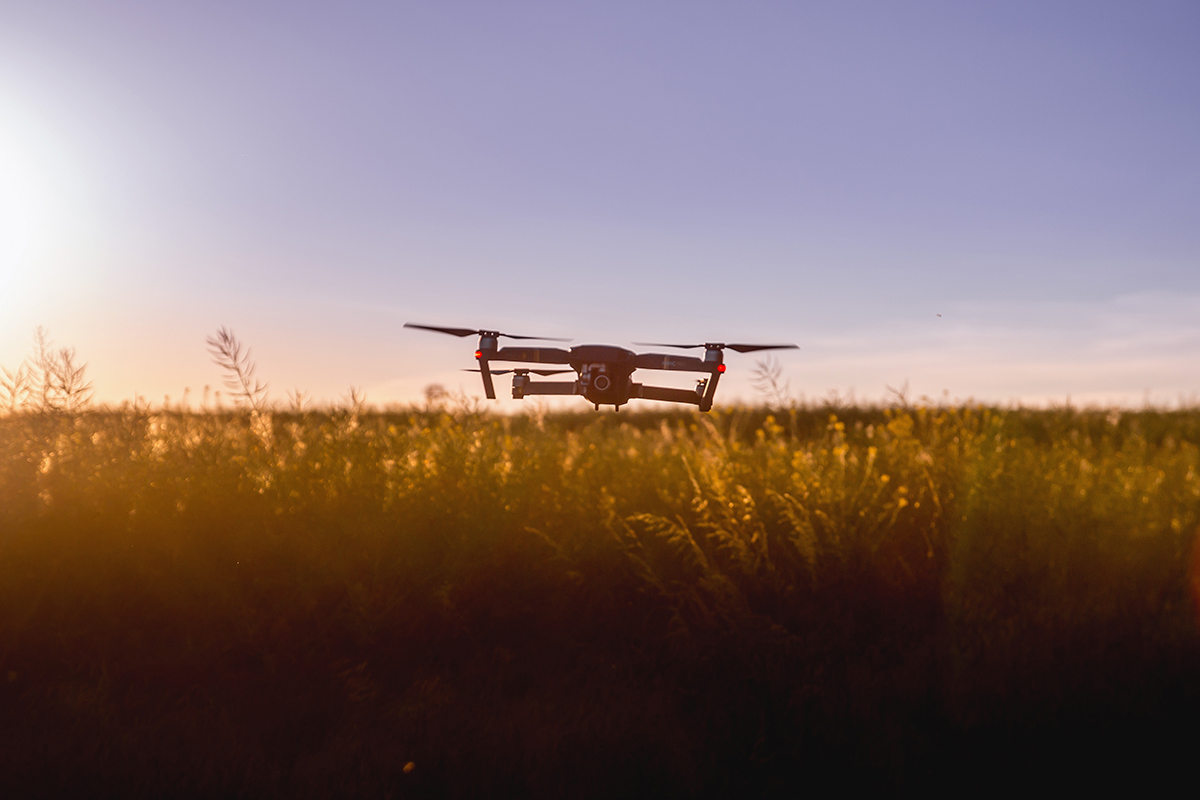Discussions about the potential impact of drones in industries like agriculture and first response have been going on for a long time now, and there are clear benefits and efficiencies that drones will be able to bring to these industries. However, talk about how processes and workflows might change these industries often comes at the expense of the tangible benefits that have already been quantified for surveyors that have adopted drone technology. Those benefits have the potential to grow and scale while professionals in other industries are at the beginning phases of their adoption process.
Does that mean the survey space represents the greatest potential for the commercial application of drone technology? Seeing how surveyors can do more with less with the technology and data from Skylogic Research, which identifies surveying and mapping industry as the most profitable of all the segments, it certainly seems as if the opportunities in the survey space are as unique as they are lucrative. However, it’s important to focus talk about opportunities in this space or any other around how business problems are being solved by drones, as opposed to solutions that may or may not be able to address these issues. Integrating drones in surveying workflowsExcitement around the opportunities drones represent is easy to understand. Surveying companies have been directly and indirectly challenged to raise efficiency after experiencing a growing demand in the last year that is expected to continue in 2018. Drones have proven that they can help create these efficiencies, and it’s a benefit the technology enables by providing surveyors with more options related to how they process their data as well as being able to reduce man-hours by up to 60%. Does that mean the opportunities in this space are just about acquiring a drone?The reality is that land surveying is a challenging profession which requires a special license. In nearly any state, producing topographic data requires a having a state-issued licensing survey, which takes many years and a lot of experience to get. This reality means that the opportunities in the space are best realized by surveyors who can use drones, as opposed to drone operators trying to figure out how they can provide value to surveyors. It’s one of the reasons that many have found it to be much preferable to train current surveyors to be drone operators.“It makes much more sense to utilize current field survey staff who are already going out to project sites to just operate the drone as part of their field workflow,” said Daniel Katz, Co-founder at Aerotas. “Also, surveyors already have to be highly skilled technology operators, so a drone is not too far a leap for them.”Aerotas creates turn-key drone systems for land surveyors and helps businesses across industries develop in-house drone capabilities, but an important consideration when it comes to creating value for their clients surrounds being able to discuss drone technology as a relevant tool to be utilized as necessary, rather than a piece of technology that’s coming in to replace everything.Headlines and reports centered on the potential impact of drone technology have raised expectations and gotten stakeholders asking about things like creating an entire drone program, and that talk underscores the opportunities many see in the space. However, it’s talk that can lead those stakeholders down an inappropriate avenue, which means they often have to pull back and focus on the right question before becoming too focused on a specific answer.“Drones are not going to be your silver bullet to every problem,” said David Boardman, CEO at Stockpile Reports. “They can definitely be the right tool for a given problem, and they’ve opened up new approaches that have created incredible efficiencies, but if you’re really focused on the problem of materials management, you can’t just consider a specific piece of hardware. How do you help solve that business problem? That’s what matters.”The business problems in the surveying space can be dealt with and resolved in unique ways because of the capabilities of drones, but the opportunities here are related to what it means to see those problems solved, not because all of them can be resolved with drones. Of course, each project is different and requires its own approach, which makes it hard to generalize about data collection time or the division between the amount of work done by a field crew or a drone. There will almost always be some points that need ultra-high accuracy as well as critical points that are obscured from the air. All of which means that drones are rarely going to be the only tool used on a survey project, and their true value in this sector needs to be better understood. Quantifying the valueHeadlines that talk up the billions of dollars in drones have fueled an incredible amount of hype for the technology, but that hype has not defined where the opportunities for drones reside. The reality associated with what’s possible, and what will be possible, is the only thing that really matters, and a recent report laid out these realities in specific detail.The 2017 Drone Market Sector Report, an 88-page report from the team at Skylogic Research, included the results of a survey of over 2,600 drone buyers, service providers, business users, and software service users, as well as insights into the verticals that use drone data. The report found that the surveying and mapping industry is the most lucrative of all the segments, even though it will not be the biggest. In the top 10 of drone services making over $100,000 per year, the first place is taken by surveying/GIS/mapping services, followed by aerial photography and video. The distinctions between these sectors underscore the very different opportunities represented by each.“Surveying / mapping / GIS and aerial photography /video are two very distinct types of drone services,” said Colin Snow, CEO and Founder of Skylogic Research. “The first centers on creating maps. The second centers on images or video for media production.”These very different needs and requirements further underscore where and how opportunities in the survey space will be most prevalent. Being able to do things like quantify distinctions between post-processing software for drone imagery and laser scanners is part of what it will mean to seize the opportunities being created in the space. Doing so is about understanding where and how all of these solutions can be best utilized.“The right imagery-based software will enable a surveyor to get to a final surface, line-work or contours massively faster than even the most user-friendly laser scanner software,” Katz continued. “However, there´s a trade-off as laser scanner software has to handle massively larger and more complex laser scanner data types.”That kind of understanding is where and how the opportunities for drones in the survey space are being realized and created, and they’re as real as they are powerful. In many cases, surveyors merely need to understand that using a drone doesn't represent that big a change for them if they have the right SOPs for data collection and the right workflow for producing their final linework. It's proof that these opportunities are built on the methodologies and approaches that have been employed for decades now, rather than something completely new which is going to redefine the industry. It’s a proposition that people on both sides of the issue need to work through and understand though. Who’s in the best position to seize the opportunities?For stakeholders in the survey space, a topic that is often debated is whether or not an organization should build their own drone program or outsource. Much like questions related to “photogrammetry vs LIDAR” though, it’s not an either/or proposition. In fact, being able to understand the nuances associated with specific issues like photogrammetry/LIDAR is what helps define where and how the value can be created with drones, and whether or not service providers might be able to offer that value.“In general, usage of LiDAR drones vs. lower-cost drone-based aerial mapping/photography systems that generate point clouds depends on the clients accuracy requirements,” Snow mentioned. “A good drone service provider knows when to use each to provide the best product at the right price.”Service providers that can do so will be able to take advantage of the opportunities in the space that drones have opened up. Having the expertise to provide this kind of insight, before talk about drones or any other piece of technology is discussed, is critical though. These kinds of insights can drive the creation of incredible value, which can then be realized in ways that may or may not incorporate drone technology.“Everyone is really excited to see what's possible with drones,” Boardman said. “That can be a fine place to start, but the conversation really needs to transition to what business problems can be solved with them. If that’s not something an organization is prepared to do, they might suddenly find themselves with a staff of people flying a fleet of expensive drones. At some point they’re going to have to answer questions about their core business, and whether or not they really want to buy, maintain and upgrade a drone fleet.”Setting up an entire drone program obviously isn’t a fit for some organizations, but there are others where doing so can make sense. Sorting through these issues and defining what value that kind of setup or any other could look like is where the real opportunity in the space resides. Professionals that can work through distinctions related to what solution is going to create the most value in the survey space have a unique opportunity, because more people in this sector are asking these questions than anywhere else in light of the way UAVs have proven they can make a given task faster, cheaper or safer.The desire to figure out what it means to effectively integrate drones into a surveying business or workflow showcase why the opportunities that exist for drones in this space are especially lucrative. However, being able to take advantage of them is more about insight and expertise, rather than specific pieces of hardware or technology.
Quantifying the valueHeadlines that talk up the billions of dollars in drones have fueled an incredible amount of hype for the technology, but that hype has not defined where the opportunities for drones reside. The reality associated with what’s possible, and what will be possible, is the only thing that really matters, and a recent report laid out these realities in specific detail.The 2017 Drone Market Sector Report, an 88-page report from the team at Skylogic Research, included the results of a survey of over 2,600 drone buyers, service providers, business users, and software service users, as well as insights into the verticals that use drone data. The report found that the surveying and mapping industry is the most lucrative of all the segments, even though it will not be the biggest. In the top 10 of drone services making over $100,000 per year, the first place is taken by surveying/GIS/mapping services, followed by aerial photography and video. The distinctions between these sectors underscore the very different opportunities represented by each.“Surveying / mapping / GIS and aerial photography /video are two very distinct types of drone services,” said Colin Snow, CEO and Founder of Skylogic Research. “The first centers on creating maps. The second centers on images or video for media production.”These very different needs and requirements further underscore where and how opportunities in the survey space will be most prevalent. Being able to do things like quantify distinctions between post-processing software for drone imagery and laser scanners is part of what it will mean to seize the opportunities being created in the space. Doing so is about understanding where and how all of these solutions can be best utilized.“The right imagery-based software will enable a surveyor to get to a final surface, line-work or contours massively faster than even the most user-friendly laser scanner software,” Katz continued. “However, there´s a trade-off as laser scanner software has to handle massively larger and more complex laser scanner data types.”That kind of understanding is where and how the opportunities for drones in the survey space are being realized and created, and they’re as real as they are powerful. In many cases, surveyors merely need to understand that using a drone doesn't represent that big a change for them if they have the right SOPs for data collection and the right workflow for producing their final linework. It's proof that these opportunities are built on the methodologies and approaches that have been employed for decades now, rather than something completely new which is going to redefine the industry. It’s a proposition that people on both sides of the issue need to work through and understand though. Who’s in the best position to seize the opportunities?For stakeholders in the survey space, a topic that is often debated is whether or not an organization should build their own drone program or outsource. Much like questions related to “photogrammetry vs LIDAR” though, it’s not an either/or proposition. In fact, being able to understand the nuances associated with specific issues like photogrammetry/LIDAR is what helps define where and how the value can be created with drones, and whether or not service providers might be able to offer that value.“In general, usage of LiDAR drones vs. lower-cost drone-based aerial mapping/photography systems that generate point clouds depends on the clients accuracy requirements,” Snow mentioned. “A good drone service provider knows when to use each to provide the best product at the right price.”Service providers that can do so will be able to take advantage of the opportunities in the space that drones have opened up. Having the expertise to provide this kind of insight, before talk about drones or any other piece of technology is discussed, is critical though. These kinds of insights can drive the creation of incredible value, which can then be realized in ways that may or may not incorporate drone technology.“Everyone is really excited to see what's possible with drones,” Boardman said. “That can be a fine place to start, but the conversation really needs to transition to what business problems can be solved with them. If that’s not something an organization is prepared to do, they might suddenly find themselves with a staff of people flying a fleet of expensive drones. At some point they’re going to have to answer questions about their core business, and whether or not they really want to buy, maintain and upgrade a drone fleet.”Setting up an entire drone program obviously isn’t a fit for some organizations, but there are others where doing so can make sense. Sorting through these issues and defining what value that kind of setup or any other could look like is where the real opportunity in the space resides. Professionals that can work through distinctions related to what solution is going to create the most value in the survey space have a unique opportunity, because more people in this sector are asking these questions than anywhere else in light of the way UAVs have proven they can make a given task faster, cheaper or safer.The desire to figure out what it means to effectively integrate drones into a surveying business or workflow showcase why the opportunities that exist for drones in this space are especially lucrative. However, being able to take advantage of them is more about insight and expertise, rather than specific pieces of hardware or technology. 














Comments